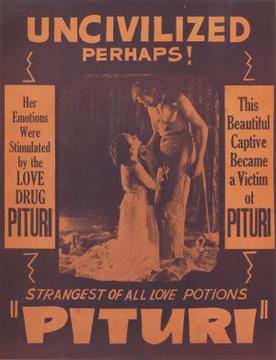
The Hattah-Kulkyne National Park is a national park in the Mallee district of Victoria, Australia. The 48,000-hectare (120,000-acre) national park is situated adjacent to the Murray River, approximately 417 kilometres (259 mi) northwest of Melbourne with the nearest regional centre being Mildura. The Hattah Lakes National Park was proclaimed on 7 June 1960, later being greatly expanded in 1980 and becoming the Hattah-Kulkyne National Park. It is a popular destination for bushwalkers and school camping trips.

Wujal Wujal, sometimes spelt Wudjil Wudjil, is a rural town and locality in the Wujal Wujal Aboriginal Shire, Queensland, Australia. It is an Aboriginal community. In the 2021 census, the locality of Wujal Wujal had a population of 276 people.

Maytown was the main township on the Palmer River Goldfields in Far North Queensland, Australia. It is now a ghost town within locality of Palmer in the Shire of Cook, having been active from c. 1874 to the 1920s. It was added to the Queensland Heritage Register on 1 June 2004.

The Palmer River is a river in Far North Queensland, Australia. The area surrounding the river was the site of a gold rush in the late 19th century which started in 1873.

The Shire of Cook is a local government area in Far North Queensland, Australia. The Shire covers most of the eastern and central parts of Cape York Peninsula, the most northerly section of the Australian mainland.

Derby is a town in north-east Tasmania, Australia, situated at the confluence of the Cascade and Ringarooma Rivers.

Cooktown is a coastal town and locality in the Shire of Cook, Queensland, Australia. Cooktown is at the mouth of the Endeavour River, on Cape York Peninsula in Far North Queensland where James Cook beached his ship, the Endeavour, for repairs in 1770. Both the town and Mount Cook which rises up behind the town were named after James Cook.

Uncivilised is a 1936 Australian film directed by Charles Chauvel. It was an attempt by Chauvel to make a more obviously commercial film, and was clearly influenced by Tarzan.
The Tenth Straw is a 1926 Australian silent film heavily inspired by the novel For the Term of His Natural Life. Little is known of the director and cast, but most of the film survives today.
The Town of Cooktown is the former local government area for Cooktown in Far North Queensland, Australia. It existed from 1876 to 1932.

Palmer is a rural locality in the Shire of Cook, Queensland, Australia. In the 2021 census, Palmer had a population of 46 people.

Laura to Maytown Coach Road is a heritage-listed road between the towns of Laura and Maytown, Shire of Cook, Queensland, Australia. It was built from c. 1877 to c. 1895. It was added to the Queensland Heritage Register on 21 October 1992.

Cook Shire Council Chambers is a heritage-listed former town hall and now museum at 121 Charlotte Street, Cooktown, Shire of Cook, Queensland, Australia. It was built from 1876 to 1877 by Henry J Meldrum and John Sullivan. It was also known as Cooktown Post and Telegraph Office and is now known as Cooktown History Centre. It was added to the Queensland Heritage Register on 8 April 1997.

Hattah-Kulkyne and Murray-Kulkyne Biosphere Reserve is a biosphere reserve in the Australian state of Victoria located to the southern bank of the Murray River to the south-east of the city of Mildura on land occupied by the following protected areas - the Hattah-Kulkyne National Park and the Murray-Kulkyne Park.

The term Mount Lyell Railway was one of the terms used for the railway operated by the Mount Lyell Mining and Railway Company between 1899 and 1963.
The 1956–57 Kangaroo tour was the ninth Kangaroo tour, in which the Australian national rugby league team travelled to Great Britain and France and played twenty-eight matches, including the Ashes series of three Test matches against Great Britain and three Test matches against the French. It followed the tour of 1952–53 and the next was staged in 1959–60.

William Edington Armit was a soldier, sailor, Native Police officer in the British colony of Queensland, explorer, naturalist and colonial administrator in British New Guinea. Armit is regarded as one of the most violent officers of the paramilitary Native Police force.
Van Dieman's Land is a 1830 British musical comedy play by William Thomas Moncrieff. It was set in Tasmania and concerned the bushranger Michael Howe.
Man of Two Tribes is a 1953 Australia radio serial based on the stories of Arthur Upfield about Detective Inspector Napoleon "Bony" Bonaparte. Morris West adapted several of Upfield's stories.
The Duchess of Coolgardie is a 1896 British stage play by Cyril Clare and Euston Leigh. It has been called an "important play" because of its overseas success.












